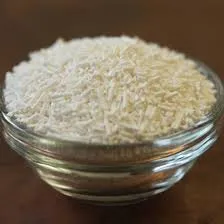
Different Categories of Fertilizers for Optimal Plant Growth and Soil Health
Types of Fertilizers An Overview
Fertilizers are essential for enhancing soil fertility and promoting healthy plant growth. They provide vital nutrients that plants require to thrive, and they can be categorized into several types based on their composition and nutrient content. Understanding the different types of fertilizers can help gardeners and farmers choose the right product for their specific needs.
1. Chemical Fertilizers
Chemical fertilizers, also known as synthetic or inorganic fertilizers, are manufactured through industrial processes. They typically contain specific ratios of essential nutrients such as nitrogen (N), phosphorus (P), and potassium (K), often referred to as N-P-K ratios. Common examples include ammonium nitrate, superphosphate, and potassium sulfate. These fertilizers are highly concentrated and act quickly, making them effective for stimulating rapid plant growth. However, overuse can lead to soil degradation and water pollution, prompting concerns about their long-term sustainability.
2
. Organic FertilizersOrganic fertilizers are derived from natural sources, such as plant and animal matter. They include compost, manure, bone meal, and fish emulsion. These fertilizers not only provide essential nutrients but also improve soil structure, enhance moisture retention, and promote beneficial microbial activity. Organic fertilizers release nutrients gradually, which reduces the risk of leaching and provides a steady supply of nutrients to plants. Although they may take longer to show results compared to chemical fertilizers, their long-term benefits for soil health and the environment are significant.
types of fertilizers

3. Natural Fertilizers
Natural fertilizers are similar to organic fertilizers but are minimally processed. Examples include seaweed extracts, rock phosphate, and green manure (cover crops turned back into the soil). These fertilizers enrich the soil with a wide range of micronutrients and organic matter, thereby enhancing its fertility without the risks associated with synthetics. Natural fertilizers are particularly favored in organic farming practices and are seen as a sustainable alternative to synthetic options.
4. Slow-Release and Controlled-Release Fertilizers
These are specially formulated fertilizers that release nutrients gradually over time. Slow-release fertilizers typically consist of coated granules that dissolve slowly, while controlled-release fertilizers use sophisticated technology to regulate nutrient release based on environmental conditions. This helps reduce nutrient loss and minimizes the need for frequent applications. These fertilizers are ideal for busy gardeners and large-scale agricultural operations aiming for efficiency and sustainability.
Conclusion
Choosing the right type of fertilizer depends on various factors including soil type, plant requirements, and environmental considerations. By understanding the differences between chemical, organic, natural, and slow-release fertilizers, users can make informed decisions that lead to healthier plants and more sustainable gardening practices. Whether for a small garden or large agricultural fields, the right fertilizer can make a profound difference in achieving optimal plant growth and soil health.
-
Understanding Synthetic Rubber OptionsNewsApr.27,2025
-
Trichloroisocyanuric Acid: Essential for Clean and Safe WaterNewsApr.27,2025
-
Sodium Dichloroisocyanurate: Key to Safe Water TreatmentNewsApr.27,2025
-
Sodium Acid Pyrophosphate: Essential in Modern Food ProcessingNewsApr.27,2025
-
Essential Water Treatment ChemicalsNewsApr.27,2025
-
Denatured Alcohol and Its Industrial UsesNewsApr.27,2025
-
The Versatile Uses of Sodium BicarbonateNewsApr.24,2025
Hebei Tenger Chemical Technology Co., Ltd. focuses on the chemical industry and is committed to the export service of chemical raw materials.
-

view more DiethanolisopropanolamineIn the ever-growing field of chemical solutions, diethanolisopropanolamine (DEIPA) stands out as a versatile and important compound. Due to its unique chemical structure and properties, DEIPA is of interest to various industries including construction, personal care, and agriculture. -

view more TriisopropanolamineTriisopropanolamine (TIPA) alkanol amine substance, is a kind of alcohol amine compound with amino and alcohol hydroxyl, and because of its molecules contains both amino and hydroxyl. -

view more Tetramethyl Thiuram DisulfideTetramethyl thiuram disulfide, also known as TMTD, is a white to light-yellow powder with a distinct sulfur-like odor. It is soluble in organic solvents such as benzene, acetone, and ethyl acetate, making it highly versatile for use in different formulations. TMTD is known for its excellent vulcanization acceleration properties, which makes it a key ingredient in the production of rubber products. Additionally, it acts as an effective fungicide and bactericide, making it valuable in agricultural applications. Its high purity and stability ensure consistent performance, making it a preferred choice for manufacturers across various industries.











